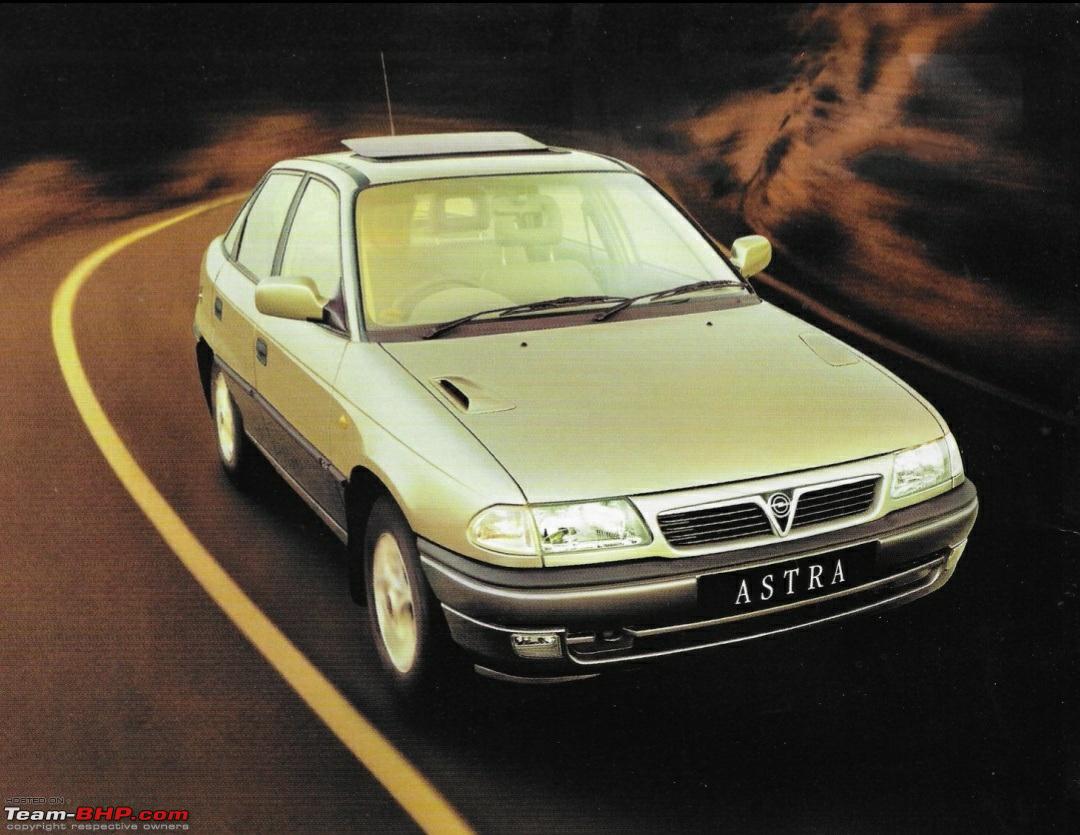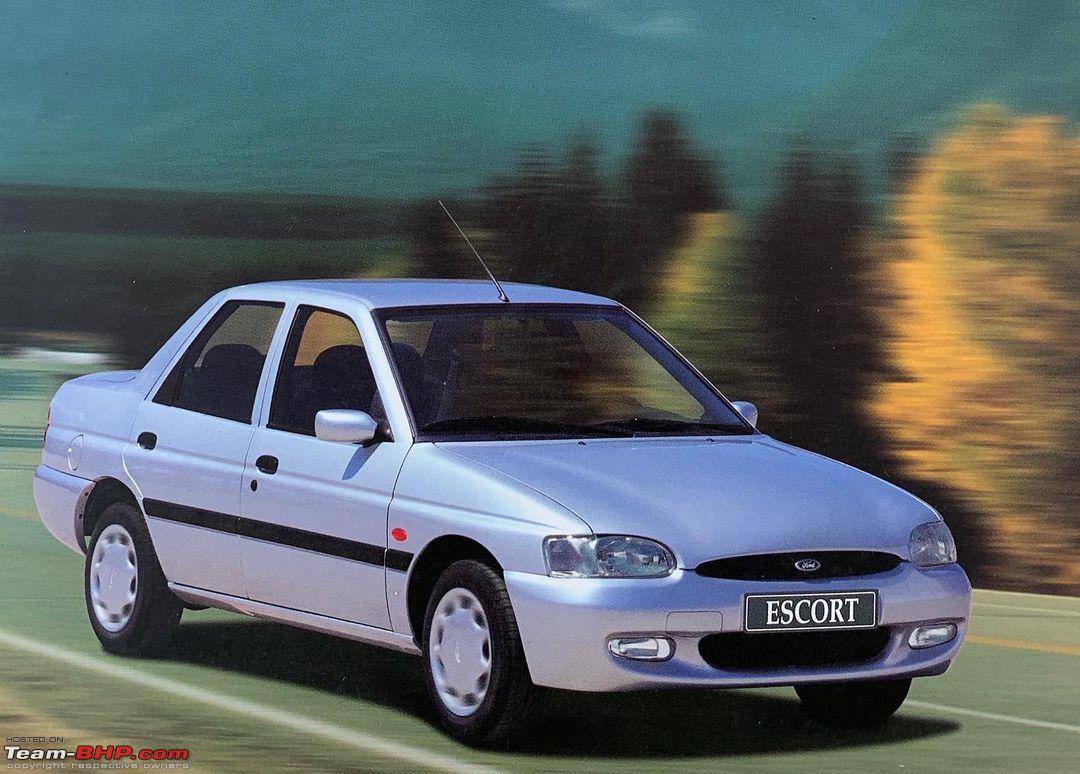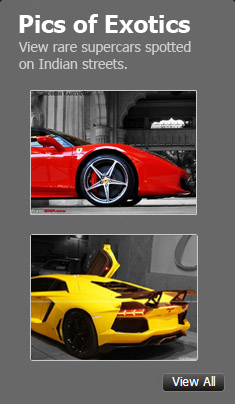News
Suzuki Baleno: A tribute to the underrated 90s premium sedan
With image building as a top priority, Maruti Suzuki only allowed a few exclusive dealers to sell the Baleno.
BHPian Shreyfiesta recently shared this with other enthusiasts.
A Tribute to the original Suzuki Baleno! It was underrated. Very, very underrated.
Back in the 1990s, Maruti was focused on providing transportation to the masses with affordable cars. The company's philosophy was to produce huge volumes to enjoy economies of scale, which was all-important in the car manufacturing business. The Esteem launched at the end-1994 was Maruti's flagship model till 1999. Maruti 1000 also was being sold alongside the Esteem in those days. It seemed unlikely that Maruti would bring anything higher-priced, preferring to put its eggs in the bottom end of the market were 800, Omni and Zen used to account for about 90 per cent of the company's sales. Premium segments had unprofitable volumes which according to Maruti's philosophy was not worth pursuing. Later, Maruti realised that it's not enough fortifying its bread-and-butter models against the Daewoo, Opel, Honda and Ford. It had to take a gun for new territory to expand its model range and its powerful brand image.
The Baleno was the first assault from Maruti's side on the premium sedan category where it was pitted against Opel Astra, Honda City and Mitsubishi Lancer. Like I said before, the economics in this segment made no sense to Maruti, to which a low-volume, the high-import content build was anathema. For the fact to be said, even Maruti was not expecting sales of 1000 units per month in the case of Baleno. It was actually a car that was designed and developed to compete in the larger but more bitterly contested family car market in Europe. In Japan and some other markets, it was sold as Cultus. For Maruti, the Baleno was its first truly luxurious product and its first opportunity to showcase Suzuki's technology. It was really an acid test for Maruti as it was going to enter a segment where customer expectations were at higher levels.
Maruti found that Zen and Esteem customers who wanted to graduate to a more premium segment had no choice within the Maruti family and hence went to their competitors. What people were looking for was a brand they can trust, a company they know and were comfortable with, which was one of Maruti's advantages. Baleno was the first product from Maruti to be assembled and not manufactured. The company had signed an MoU with the DGFT to import the Baleno CKD kits. Also, it was the first all-new car launch for Maruti after a long gap of five years since they launched Esteem in November 1994. The Esteem itself was basically an updated version of Maruti 1000 with a more powerful G13BA 1.3-litre engine.
29th November 1999
Baleno's official launch event had all the usual trappings with lady hostesses and a laser display. But the pride evident in all Maruti officials, especially Rohtas Mal, the Chief General Manager, and Mr Jagadish Khattar, the CMD was plain to see. The price was disclosed only on that day, it carried an ex-showroom price tag of ₹ 6,75,000. Unlike the Esteem, this was available only in a single variant, the 1.6 GLX. The introduction of Baleno in 1999 allowed Maruti to cover the entire spectrum from entry-level 800 to luxurious Baleno. The sedan was originally introduced with an indigenisation level of only 25.6 per cent.
With image building on top of its priority list now, Maruti decided not to allow all its dealers to sell its premium product Baleno. Several dealers in Delhi, Mumbai and Chennai were denied the right to sell this ₹ 7 lakh plus product from their outlets. All Kolkata based dealers got the rights to sell Baleno, two in Mumbai, one in Chennai and five dealers in Delhi were asked to improve their facilities to sell this prized vehicle. Maruti was playing it safe with its premium product and they were not interested in taking any risk with the image.
Even for the brand promotion of Baleno, Maruti chose to be exclusive from the beginning. The company had tied up with the Taj Group for showcasing the car in some of the hotel chain's select properties in Delhi, Mumbai, Chennai, Bengaluru and Kolkata only, with a competition thrown in only for the guests to these hotels. By the end-1999, Maruti's product range comprised 800, Omni, Zen, Gypsy, 1000, Esteem and Baleno. With a share of almost 35 per cent of the segment, Esteem was the market leader in the entry-level sedan segment back then. When Esteem and Baleno operated in tandem, one at the entry-level of the sedan segment and the other at the upper end, Maruti expected to strengthen its dominance of the luxury car segment.
Baleno was quite a shift from Maruti's philosophy of concentrating on the lower end of the market, but how good was this sedan as compared to Astra, Cielo, Lancer and City?



EVERYTHING ABOUT THE BALENO
Design:
The Baleno was originally designed in 1994, and it received a mid-life facelift later in 1998 which dramatically spruced up its looks. Dimension wise, Baleno cast the same noon-day shadow as a first-generation Honda City with length and width identical, down to the last millimetre. This actually means that it was smaller than Opel Astra and Mitsubishi Lancer. At the front, the nose treatment was stunning, it was very modern and aggressive during those days. The rectangular, meshed grille stood out from the bodywork with its chrome border. The bonnet ran smoothly around the grille area and blended into the front bumper. What gave life to the Baleno's face were the clear-vision headlamps with an eye-shadow-like black outline and integrated turning lights.
'Love it' or 'Hate it' design at the front.

The side profile was characterised by a high waistline, had smooth and clean lines but it was not so exciting to look at. All those people who expected ground-breaking design was disappointed when they saw Baleno on roads for the first time. Honestly, it made no impression on casual observers. The thick boot section, the square and flat tail lights gave it place in a pool of bland cars. When most sedans had wraparound tail lamp clusters, Suzuki just slapped at the rear end of Baleno. Test cars provided to auto journos were fitted with a rear spoiler which was not actually a standard fitment. Maruti had to include such things in its options list to enhance the looks at the rear. It really looked like a solidly-built contemporary car with European design philosophy in those days.
The not-so-exciting side profile.

Odd-looking rear end with boxy shaped taillights. The car shown in this picture is a facelifted one.

When launched, the Baleno was offered in five exterior shade options :
- Milky White
- Pearl Silver
- Exotique Green (Also sold in 800, Zen, Omni and Esteem models)
- Atlantic Blue (Also sold in early-batches of Alto and WagonR)
- Riviera Red (Also sold in 800 Special Edition and Esteem)
Interior:
Inside, the layout and trim was well-presented and effectively executed. The extensive use of matching door trim gave it a look of luxury. The 3-way adjustment was available for the driver's seat (long slide range, seatback recline and height adjustment). Although three rear seat belts were provided, when three adults were seated, the space was a little cramped. Door pockets were too small to place something like a bottle, but there was a useful storage box between front seats. Going by the standards of the 1990s, Baleno's interior had most of the features that everyone expected from a car of its class. The cabin light had to be placed near the IRVM rather than the centre of the cabin.
Baleno's dashboard looks cool even now, all the switches and controls are ergonomically placed. The Interior shown in the picture is that of a facelifted version, pre-2003 models had a four-spoke steering wheel, black instrument cluster dials, etc.

The rear seat was given maximum attention in the Baleno, it was totally redesigned for the Indian market. There was more bolstering for the lower back and support under the thighs was also increased. It was not possible to find upright seating posture like in an Opel Astra, but the overall result was a great comfort. The centre tunnel was flattened to accommodate the third person. A rear centre armrest was also provided but at the expense of the 60:40 split seat which was done away with. Air conditioning was another area with special attention that was given to back-seat cooling. The central air-con vents were positioned high on the dashboard and the blower beefed up to blast air all the way to the back.
The entire cabin. The quality of plastics used inside the cabin was much better than that of modern-day Suzukis.

Suspension and Ride Quality:
Baleno was suspended on a fully independent setup, with MacPherson struts, at both front and rear. An anti-roll bar was standard at the front. The suspension was mounted on a sub-frame, which reduced NVH levels to an extent and isolated passengers from the road even better. Maruti and Suzuki engineers spent nearly a year fine-tuning the ride and handling. The team tried out many options with the springs and damper rates and developed special struts for India. Maruti had imported some Balenos from Japan and benchmarked them with competitive models in India. They identified the key areas which needed improvements, these included suspension, rear seat design, fuel economy and air conditioning. The Indian-spec Baleno sedan was introduced with all these things in mind.
The suspension setup, though not on the softer side, simply smothered everything that was thrown in its way from hidden speed-breakers to potholes. In fact, the high-speed poise of the Baleno was terrific and it was possible to motor at three-digit velocities which, on a less-than-smooth surface, you wouldn't dare try in a City of early-2000s. Astra had better high-speed road manners but the Baleno came close and was way ahead of both the City and Lancer in this respect. At low speeds in town, you can still feel the stiffness of the suspension but not in an obtrusive way.
Performance and Handling:
Suzuki's G16B 1.6-litre four-cylinder motor was an absolute gem. It reaffirmed our belief that the Japanese make the best petrol engines on this planet. It was a pretty high-tech unit with 16 valves, multi-point fuel injection, a hollow camshaft and distributor-less electronic ignition. It was a SOHC unit where all four valves were operated via rockers driven by a single camshaft. This unit churned out a decent 94bhp at 6000rpm but more impressive was the torque, a thumping 131Nm at 3000rpm. These figures were impressive not only on paper, but it was even more convincing on the road.
The legendary G16B unit.

The flat torque curve of the engine is the strongest point. Put your foot down in any gear and the Baleno gallops forward in a stepless, linear way. This makes the Baleno an easy car to drive. Gears can be changed whenever you feel like it, and even overdrive is eminently usable. It's the meaty and flat torque curve that gives the Baleno fantastic bottom and mid-range grunt. With a red line at 6600rpm, the Baleno is capable enough to hit the 100kmph mark in just 11.1 seconds. On the drag strip, the Honda City 1.5 (non-VTEC) had an edge over the Baleno with its ability to crack the 11-second barrier to 100kmph and record a higher top speed of 185kmph against Baleno's 175kmph. Where the Baleno really lost out to the City was in top-end performance, Honda's 1.5-litre units were much better.
Flat torque curve. Sorry for the poor quality image.

From a handling perspective too, the Baleno used to do the job without fuss. The well-weighted steering gave average feedback from the road. Honda City's sharp and ultra-responsive steering took the honours for communicating best with our fingertips. Like most FWD cars, Baleno understeered, the nose ploughed wide when it lost grip. The limiting factor here where the tyres, stock 165/80 R13 tyres were too skinny for a car with such performance. For normal motoring, these tyres were capable do the job. The taller 80 series profile also took the edge out of handling. Maruti was concerned about damaged wheel rims more susceptible to lower-profile tyres. A smaller section reduced rolling resistance and improved fuel economy. Maruti had to consider at least a 175/70 R13 tyre in Baleno. Cielo/Nexia had wider 185 section tyres and those were nowhere near as quick.
A closer look at Baleno's engine bay.

Competition:
By late-90s, India's sedan buyers had many other options besides Ambassador, Contessa and Esteem to choose. Baleno's entry into the Indian car market saw it vying with the Mitsubishi Lancer, Honda City and Opel Astra. Just before few days of Baleno's launch, Ford Escort was bowed out of production, to provide safer passage for the Ikon. Lancer had the looks and style that reeked of class. It was on a high after winning the prestigious JD Power awards for quality. At the time of Baleno's introduction, City had undergone a major facelift, it was one of the ultimate driving machines in our market back then.
Daewoo Cielo, launched in July 1995. Shown in the picture is the Executive variant of the sedan that came out later in 1999.

Opel Astra, launched in August 1996.

Ford Escort, launched in September 1996. This was actually phased out a few days before Baleno's launch.

Honda City, launched in January 1998. This was one of the best-selling cars in the premium sedan category.

Mitsubishi Lancer, launched in October 1998 by Mitsubishi in collaboration with Hindustan Motors.

Continue reading Shreyfiesta's Baleno tribute for BHPian comments, insights & more information.


















